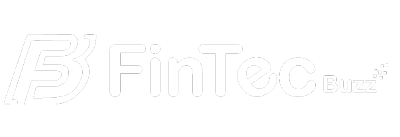Fund management software has become essential for the financial world, which is increasing its dependence on technological data systems and investment operations for efficiency and optimal portfolio performance. Software selection for fund management operations in 2025 becomes critical because of AI advancements combined with real-time analysis through cloud platforms, which provides business advantages.
This guide reviews the leading fund management software options in 2025 to assess their important capabilities, cost structures, and business benefits for financial experts who need to make informed choices.
Table of Contents
1. Understanding Fund Management
2. Key Attributes to Look for in Fund Management Software
2.1. Multi-Asset Class Support
2.2. Real-Time Portfolio Analysis
2.3. Customizable Dashboards
2.4. AI and Automation Features
2.5. Compliance and Regulation Tracking
2.6. Investment Performance Monitoring
2.7. Integration Capabilities
2.8. Cloud-Based Architecture
2.9. Risk Analytics Software
2.10. Financial Reporting Tools
3. Top Ten Fund Management Software Solutions
3.1. BlackRock Aladdin
3.2. SS&C Advent Geneva
3.3. eFront (by BlackRock)
3.4. SimCorp Dimension
3.5. Allvue Systems
3.6. Enfusion
3.7. Charles River IMS (State Street)
3.8. FundCount
3.9. Clearwater Analytics
3.10. BNY Mellon Eagle Investment Systems
4. How to Select the Best Fund Management Software for Your Needs?
5. How to Implement Fund Management Software
Conclusion
1. Understanding Fund Management
A financial institution depends on fund management to control and supervise its investment portfolio by determining asset allocation methods alongside risk management responsibilities and compliance requirements, and performance measurement activities. Fund management functions as an essential tool for institutions, hedge funds, and mutual funds, along with high-net-worth individuals, to build their wealth and protect their investments. The automation and simplification of fund management tasks are made possible by fund management software, which provides centralized platforms for regulatory compliance and data analysis and transaction processing, and performance reporting functions.
2. Key Attributes to Look for in Fund Management Software
Fund management software evaluation requires organizations to focus on these main features. Organizations need to evaluate several characteristics in fund management software for achieving operational efficiency and regulatory compliance, and delivering superior client services. The following essential qualities represent the priority list:
2.1. Multi-Asset Class Support
Suitable fund management software needs to support the administration of various types of assets, including equities and fixed income, alongside derivatives and real estate, and alternative investments. Scalable investment approaches can be accommodated using only one platform.
2.2. Real-Time Portfolio Analysis
The evaluation of portfolio performance must happen instantly to remain effective. Real-time analytical functions embedded in software give managers the speed to handle market shifts through optimized allocation changes.
2.3. Customizable Dashboards
Users obtain improved decision-making and higher usability through the ability to personalize dashboard views that match their unique job roles, including portfolio managers, compliance officers, and analysts.
2.4. AI and Automation Features
AI-driven tools for predictive analytics, trade recommendations, and risk assessment increase efficiency and precision in fund management. System automation within workflows cuts down operational errors while decreasing total operational expenses.
2.5. Compliance and Regulation Tracking
The necessary tools for compliance should be integrated within the software because of its challenging regulatory framework. The system must include three sets of features that trigger alerts automatically and generate audit logs while automating reports that conform to global standards, MiFID II, FATCA, and AIFMD.
2.6. Investment Performance Monitoring
The ROI details, together with benchmark tracking and attribution insights, foster both accountability and strategic transparency for executed investment approaches.
2.7. Integration Capabilities
Thorough integration between the software platform should exist for third-party apps such as CRM systems, trading platforms, and accounting tools to form a single operational environment.
2.8. Cloud-Based Architecture
Cloud hosting has become the standard infrastructure for 2025 because its features include scalability and remote use as well as automatic updates and strong data protection mechanisms.
2.9. Risk Analytics Software
Through advanced analytical tools such as stress testing, VaR analysis, and scenario modeling, managers gain the ability to detect and prevent possible losses.
2.10. Financial Reporting Tools
The system generates automated reports that both fulfill regulatory needs and help stakeholders understand audit status through customizable outputs.
3. Top Ten Fund Management Software Solutions
Looking at the financial landscape, the demand for fund management solutions has been higher. Let’s delve into the top ten fund management software solutions that empower investment firms, asset managers, and financial institutions to streamline portfolio management, improve performance analysis, mitigate risks, and ensure regulatory compliance.
3.1. BlackRock Aladdin
The BlackRock Aladdin infrastructure provides users with comprehensive investment solutions that assist portfolio management operations and risk analysis functionalities. BlackRock’s Aladdin system presents strong features because it maintains a secure risk assessment system connected to the company’s extensive data networks. The system is known for having high costs and complexity issues. Each client must have their individual pricing structure created by the company at an organizational level.
3.2. SS&C Advent Geneva
The platform gives users robust capabilities to manage and administer users portfolios and funds. Real-time data processing runs alongside the system, which allows users to create their own reports according to specific requirements. Although this system provides extensive performance analysis tools among its benefits, we must also account for its ability to scale. The key disadvantage of this solution is its challenging user learning process. Professional institutions obtain subscription-based pricing plans from this data platform.
3.3. eFront (by BlackRock)
The eFront system provides specific tools for managing alternative investments, which include private equity, real estate, and infrastructure fund management capabilities. Its main benefits include specific module development in addition to monitoring compliance requirements. The software does not support fundamental asset types. Pricing varies by deployment scale.
3.4. SimCorp Dimension
SimCorp directs its services to large investment management firms with end-to-end solutions for their asset management requirements. The system provides comprehensive compliance support and immediate analytics access to clients. The software’s modular design, along with multi-asset capabilities, serves as its main benefit, but it has the drawback of expensive deployment costs. Pricing is enterprise-level and license-based.
3.5. Allvue Systems
Allvue enables financial organizations to manage their investment accounting, portfolio management, and investor relations requirements through integrated software products. The software system stands out because it combines a versatile data structure with a user-friendly interface. Cloud-native design and automation features make up the main advantages of this product. Allvue carries an exorbitant cost for businesses that operate on a small scale. Pricing is custom.
3.6. Enfusion
Enfusion delivers a cloud-based platform that combines all areas from the front to the back office operations. The advantages of this system include immediate data access, together with mobile operation capabilities and dependable support functions. Following its launch in 1997, Enfusion proved best for hedge fund and asset management organizations. Users often encounter restrictions in customization features when using the system. Pricing starts with SaaS subscriptions.
3.7. Charles River IMS (State Street)
The Charles River platform enables institutions to handle portfolio management, compliance tracking, and trade order processing. The platform offers complete operational integration as well as a robust regulatory standards feature set. The system has two main drawbacks: a demanding setup process and expensive system support costs. Pricing is enterprise-focused.
3.8. FundCount
Family offices, together with private equity and hedge funds, can use FundCount to unify their accounting and investment analysis. Users recognize this system for delivering exact data and sophisticated reporting abilities. The system looks outdated through its user interface. The system has two pricing options that allow customers to choose between on-premise installation and cloud deployment.
3.9. Clearwater Analytics
Clearwater uses automation to accumulate investment data, which it provides as reports to its users. The system operates from the cloud environment while providing instant dashboards and compliance functionalities. One benefit of this system is its user-friendly interface, while users also receive clear cost information. The system does not comply well with advanced strategic approaches. Pricing is subscription-based.
3.10. BNY Mellon Eagle Investment Systems
The software products of Eagle include solutions for data management, performance measurement, and compliance tools. The system offers two main advantages, including its scalable nature and its institutional-grade infrastructure expression. Some users cite integration challenges. Each enterprise has its own pricing model and requires extended contractual obligations.
4. How to Select the Best Fund Management Software for Your Needs?
The selection of software requires businesses to consider their dimensions and investment centers, as well as their operating complexities and regulatory needs. The first step requires you to specify your essential business functions, including risk analytics functionality, multi-asset capabilities, and investor reporting integration. Examine the software’s features regarding scalability, together with its customization options and its compliance capabilities.
Budget is also crucial. Although Aladdin and SimCorp deliver comprehensive features, their high price point prohibits lower-cost usage for companies with smaller operations. In contrast, platforms like Clearwater or FundCount offer modular features at more accessible price points.
Your selection of investment management software should include assessments for compatibility with current systems, such as CRM and ERP, and your data analytics platforms. Cloud-based platforms typically provide reduced IT expenses while enabling team-wide cooperative work.
The selection of fund optimization software depends on how well vendors perform, how reliable their customer support is, and what user reviews show. Testing the software through trials or product demonstrations allows users to evaluate if it accomplishes their business operations effectively.
5. How to Implement Fund Management Software
The adoption and transition of fund management software needs a procedural model to achieve smooth implementation. Your implementation should start with assessing all system requirements through meetings with stakeholders, who include both portfolio managers and compliance officers, and IT personnel. Set a detailed account of the project boundaries and specify all anticipated benefits as well as performance measurement requirements.
Determine the deployment model between cloud-based and on-premise systems. Cloud deployment provides adjustable features and flexible capacity but offers users complete data control through on-premise structures.
Create a phased implementation roadmap. Begin by testing the system in one department so you can discover operational difficulties. The process of moving data requires both quality assessment steps and testing validation stages. The project needs to enable smooth connectivity between itself and current systems, especially accounting systems and trading desks.
Training is critical. Users should receive targeted training resources that help them learn individual operational roles, together with regular support for adaptive purposes. The team must create standards for system update cycles while putting together monitoring systems to ensure regulatory compliance.
The system should be monitored on a frequent basis to evaluate ROI performance when compared to original targets. A strategic implementation plan decreases user disruption while bringing out the full business potential of the software application.
Conclusion
The correct fund management software of 2025 will provide firms with instant insights while ensuring both robust compliance and enhanced investment performance. Modern fund managers depend completely on AI technologies along with cloud computing and automation to perform their operations effectively. When you evaluate solutions through feature assessments alongside scalability and integration aspects, you will find the strategic solution that guarantees long-term financial institution success.
Stay Ahead of the Financial Curve with Our Latest Fintech News Updates!



